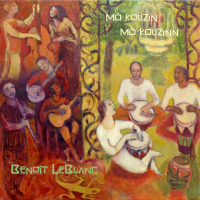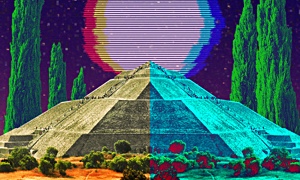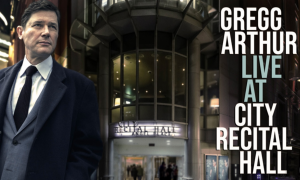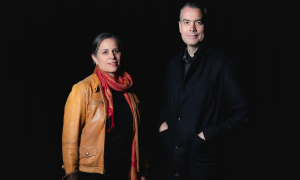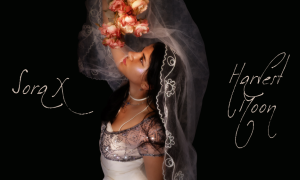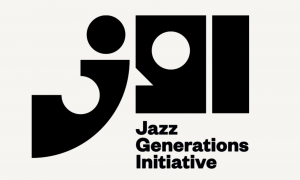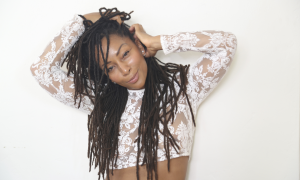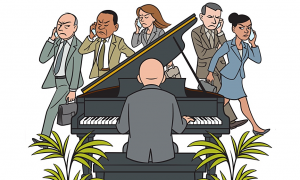By Nick Deriso:
That George Harrison kept recording until just two months before his death at age 58 in November of 2001 was its own blessing. After all, he hadn't put out a new album of solo material since 1987.
But you wondered what would become of Harrison's final works, since producer Jeff Lynne had decided to finish the project in George's absence. After all, this former frontman of 1970s hitmakers the Electric Light Orchestra—perhaps even more so than Harrison—was prone to unsuccessfully ornate albums.
What happened was one of the best two or three records Harrison issued. For me, it ranks right alongside George's debut and his 1979 self-titled album.
Lynne—who parlayed that Beatles obsession called ELO into a producing gig with each of the band's members in the 1980s and '90s (if you include Lennon's posthumous “Free As A Bird")—was respectful of his passing, but familiar enough to realize that Harrison's religious fervor needed a balancing dose of the former Fab's often-overlooked charms.
So, we get—on perhaps this record's biggest surprise, “Between the Devil and the Deep Blue Sea"—some ukelele from Harrison. (You can't be sad when someone is playing the ukelele.) It's a joy amid so much thundering emotion, and just one example of the subdued approach that permeates the “Brainwashed" CD.
That said, this project remains centered, of course, on a painful stillness—in those times when Harrison faced his final adversity. In this way, “Rising Sun" is definitive.
It started as a fine little acoustic number. But like all of Harrison's signature stuff, which is always somehow both downbeat and uplifting, this required a larger sound.
That's why Harrison was attracted, in his first solo incarnation, to Phil Spector — who couldn't fathom a record without a few thousand violins playing along. And it's why Lynne, playing posthumous svengali, wasn't going to let this one be.
Using Harrison's initial and insistent guitar-strum beat as a platform, Lynne's production explores both the ghost of regret and the atmospheric vistas that mark the best of Harrison's—and, yeah, Lynne's—work.
Yet, it's clear that Lynne understands the tune's wonderous strength. He adds rumbling fiddles, but largely gets out of the way.
Harrison never flinches from what we know—and what, more particularly, he knows—to be true: He's a goner. Harrison plays the slide guitar with the same conviction on “Rising Sun," like there isn't much time but so much to convey. Ravaged by then with throat cancer, he retakes his place as one of his generation's most stirring spiritualists.
The larger album—was he ever more consistent?—also finds a way to make room for Harrison's lesser but still enjoyable pursuits, from the jokey to the precious. Credit Lynne with grasping that a smidge of each would make this Harrison album a completely realized gem.
Even so, “Rising Sun" is the centerpiece of Harrison's overlooked finale, its reason for being. As driven as the tune is to start, it ends with a kind of wistful neatness, like a dream that couldn't possibly finish so well.
Lynne provided the same thing for Harrison, and it would have been special even if George hadn't been so notoriously inconsistent when it came to putting out records.
Here, Harrison gracefully, quietly, lets go.
And in so doing, manages one of the most delicately executed goodbyes in memory.
That George Harrison kept recording until just two months before his death at age 58 in November of 2001 was its own blessing. After all, he hadn't put out a new album of solo material since 1987.
But you wondered what would become of Harrison's final works, since producer Jeff Lynne had decided to finish the project in George's absence. After all, this former frontman of 1970s hitmakers the Electric Light Orchestra—perhaps even more so than Harrison—was prone to unsuccessfully ornate albums.
What happened was one of the best two or three records Harrison issued. For me, it ranks right alongside George's debut and his 1979 self-titled album.
Lynne—who parlayed that Beatles obsession called ELO into a producing gig with each of the band's members in the 1980s and '90s (if you include Lennon's posthumous “Free As A Bird")—was respectful of his passing, but familiar enough to realize that Harrison's religious fervor needed a balancing dose of the former Fab's often-overlooked charms.
So, we get—on perhaps this record's biggest surprise, “Between the Devil and the Deep Blue Sea"—some ukelele from Harrison. (You can't be sad when someone is playing the ukelele.) It's a joy amid so much thundering emotion, and just one example of the subdued approach that permeates the “Brainwashed" CD.
That said, this project remains centered, of course, on a painful stillness—in those times when Harrison faced his final adversity. In this way, “Rising Sun" is definitive.
It started as a fine little acoustic number. But like all of Harrison's signature stuff, which is always somehow both downbeat and uplifting, this required a larger sound.
That's why Harrison was attracted, in his first solo incarnation, to Phil Spector — who couldn't fathom a record without a few thousand violins playing along. And it's why Lynne, playing posthumous svengali, wasn't going to let this one be.
Using Harrison's initial and insistent guitar-strum beat as a platform, Lynne's production explores both the ghost of regret and the atmospheric vistas that mark the best of Harrison's—and, yeah, Lynne's—work.
Yet, it's clear that Lynne understands the tune's wonderous strength. He adds rumbling fiddles, but largely gets out of the way.
Harrison never flinches from what we know—and what, more particularly, he knows—to be true: He's a goner. Harrison plays the slide guitar with the same conviction on “Rising Sun," like there isn't much time but so much to convey. Ravaged by then with throat cancer, he retakes his place as one of his generation's most stirring spiritualists.
The larger album—was he ever more consistent?—also finds a way to make room for Harrison's lesser but still enjoyable pursuits, from the jokey to the precious. Credit Lynne with grasping that a smidge of each would make this Harrison album a completely realized gem.
Even so, “Rising Sun" is the centerpiece of Harrison's overlooked finale, its reason for being. As driven as the tune is to start, it ends with a kind of wistful neatness, like a dream that couldn't possibly finish so well.
Lynne provided the same thing for Harrison, and it would have been special even if George hadn't been so notoriously inconsistent when it came to putting out records.
Here, Harrison gracefully, quietly, lets go.
And in so doing, manages one of the most delicately executed goodbyes in memory.








